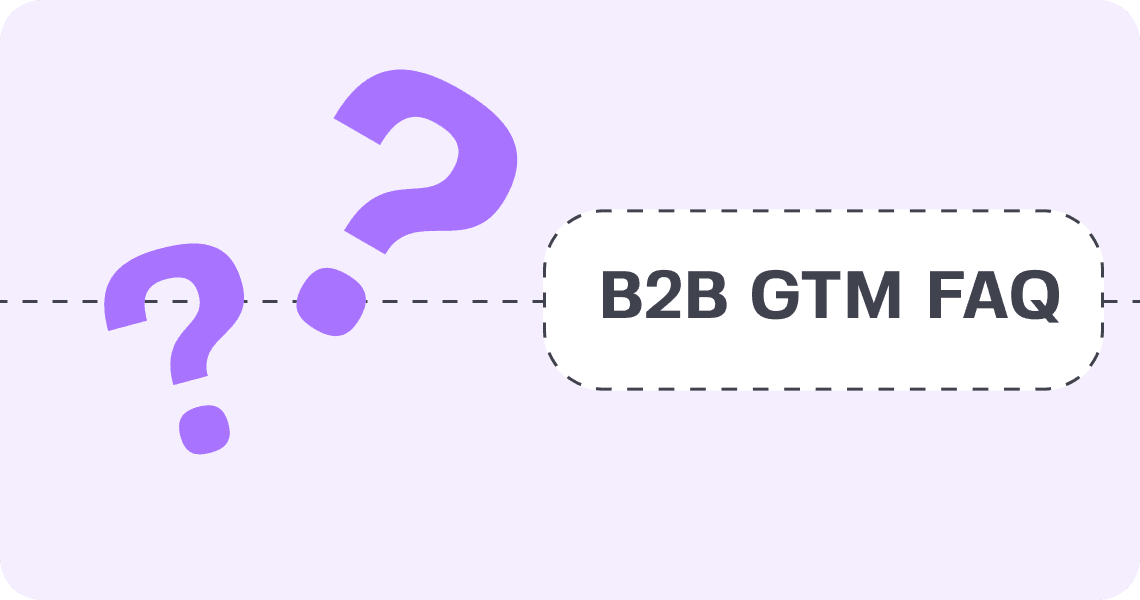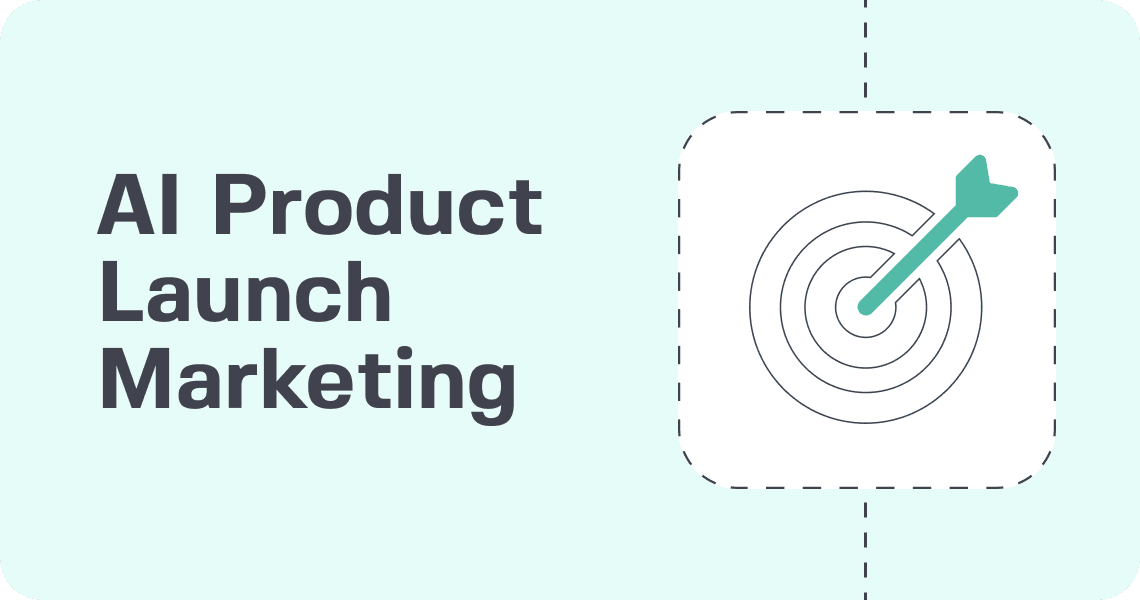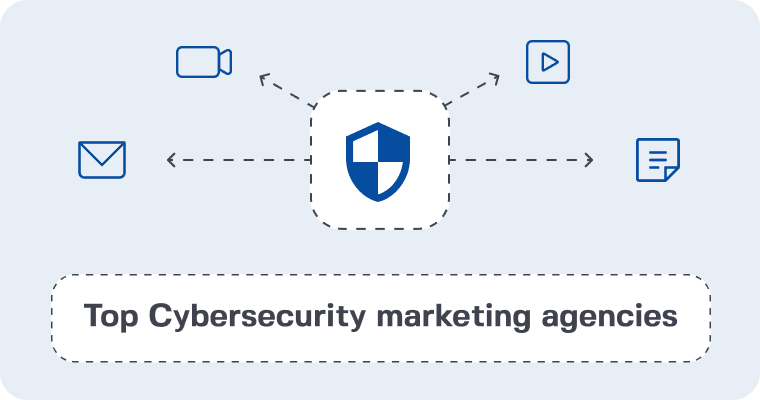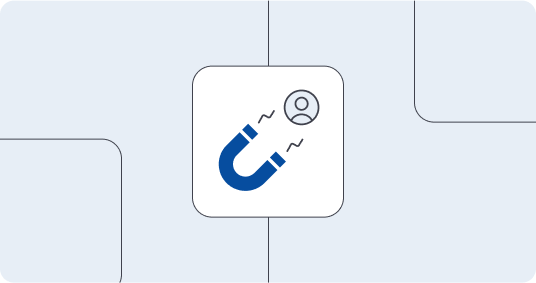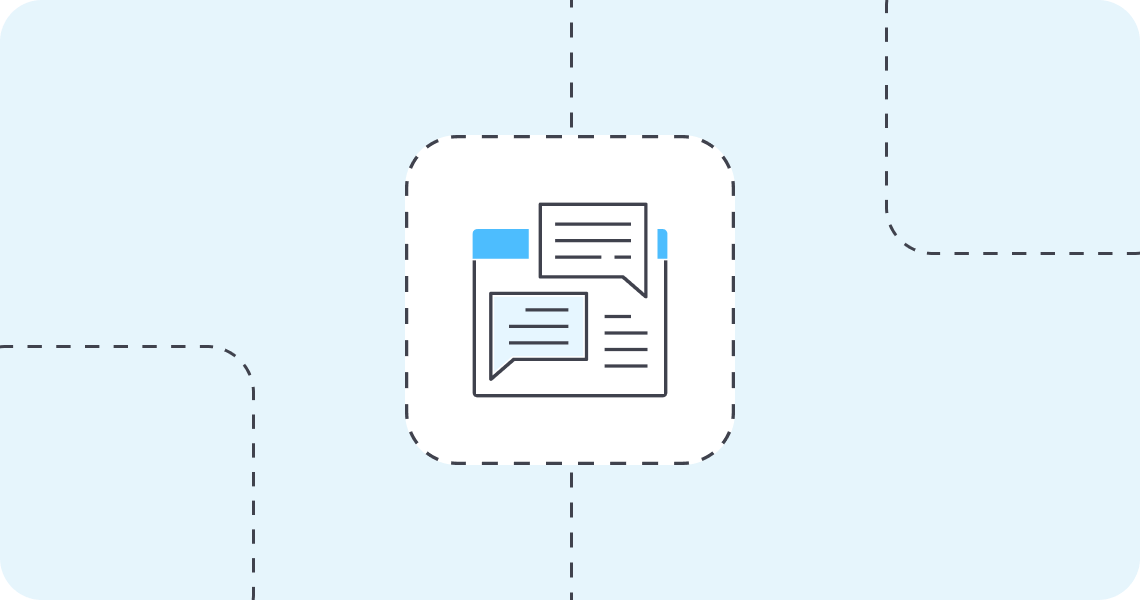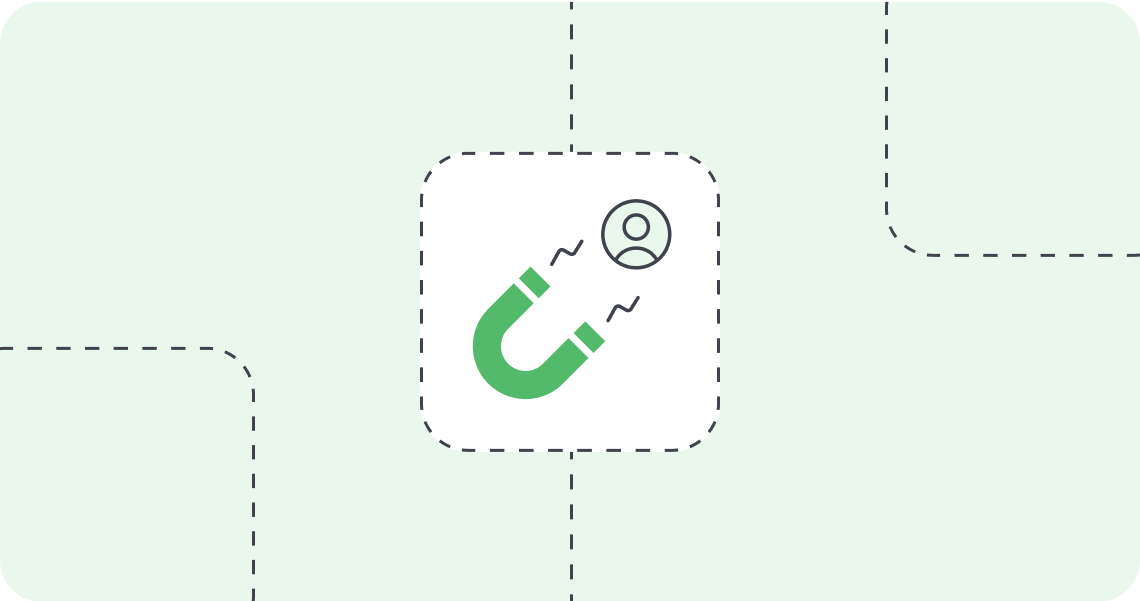In 2023, tech companies are under a lot of pressure, as the year has made it difficult to reach yearly growth goals and generate sufficient profit.
In times like these, all non-critical issues are set aside as business budgets drop during a recession, resulting in reduced inbound demand for B2B tech products/services. This reduction is evident through a decline in Google search volumes for B2B tech services.
For example, let’s look at the “best software” category. There has been a 6-34% drop in demand since 2022, creating a significant lack of in-market buyers.
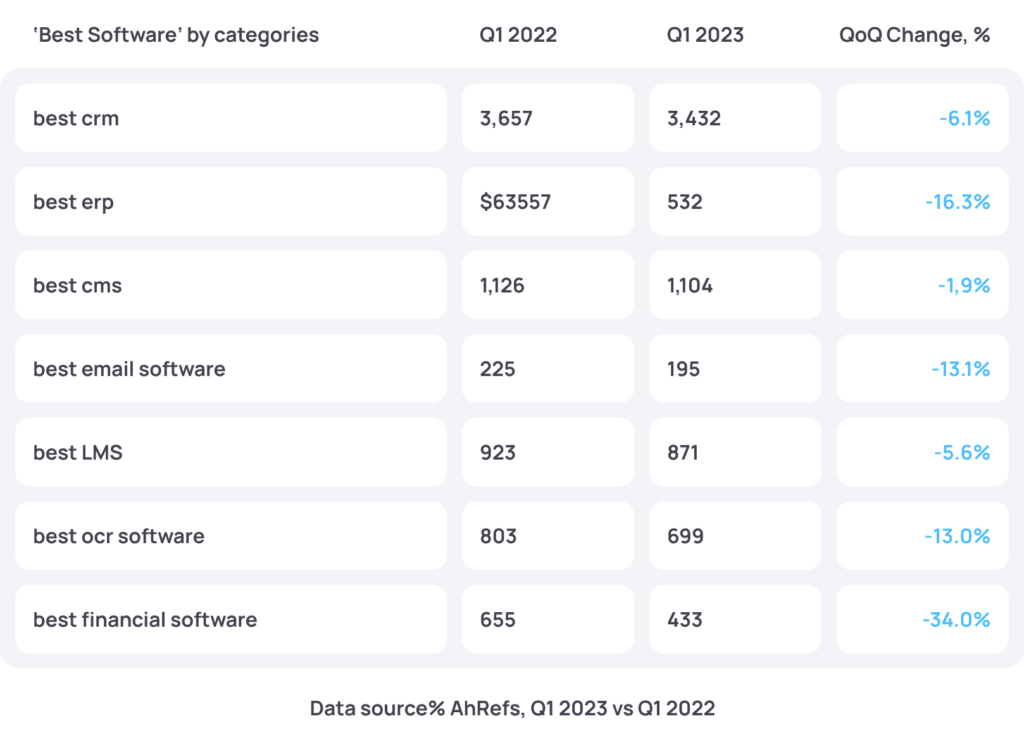
What does this mean for the B2B market?
- The decision-making process is now even longer than usual, and more individuals have to approve purchases in a turbulent economy. Consequently, you need to persuade a greater number of people to buy your product or service.
- People tend to buy from either the top vendor or the cheapest vendor. If you fall into neither category, a company is unlikely to risk switching to your solution.
- It is difficult to promote your product to whatever demand is left for catching, as marketing budgets are down
- The remaining demand is hard to catch with the changing buyer’s journey, as demand is distributed between Google, AI and Social Media.

Growth with profit no matter the limited resources becomes priority #1 for all the departments.
How to grow with limited resources amidst the declining demand?
When demand is low and distributed, you can address this challenge in two ways:
- Catch the distributed demand on multiple channels with Inbound Marketing: Utilize inbound marketing strategies to capture the scattered demand across various channels.
- Proactively create your own demand with Demand Generation: Instead of relying solely on existing demand, take the initiative to create new demand through demand generation efforts.
As demand decreases, B2B tech marketers must move beyond simply capturing existing demand and instead initiate proactive b2b demand generation programs.
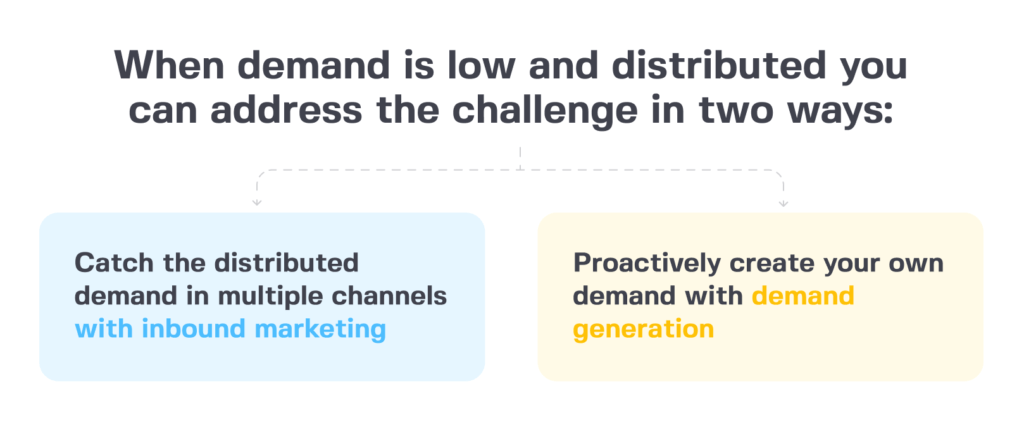
What is Demand Generation and why do you need it?
Demand generation is the entire range of B2B marketing and sales initiatives that generate interest in your company’s product or service. But it’s not just about discovering prospects that already exist. It’s about stimulating interest in people who don’t know anything about you.
When is it right to start demand generation:
- Low inbound demand: category is either a niche or not mature enough to generate inbound demand
- Foggy inbound demand: unclear intent behind keywords. Regularly happens when category is very broad
- Low brand awareness comparing to competition
- High-priced products
- Decision to buy your product involves lots of stakeholders
How Demand Generation can help to reach Marketing & Sales goals and overcome the challenges
- Build brand awareness and shorten sales cycle
- Extend the pipeline beyond the market
- Jump early in client;s decision making process
What do B2B marketers & CEOs say about Demand Generation in 2024?

Data-driven demand generation
Your audience has pains. When pains evolve into need for the solution, demand is created.
Therefore, to create demand, you need to find the exact audience with pains that you company solves. Then, you start to build awareness for this audience, emphasizing their pains in pair with your brand as a solution. This way, when a need for a solution is formulated by external triggers, and people start searching for options, your company comes up as a top of the mind choice.
Therefore, the core of 42DM’s approach to Demand Generation is to start communication BEFORE customer has a need
To catch customer before a clear need, we use this data-driven Demand Generation Framework

Step 1: Building Awareness
The first step is to create awareness among the relevant audience. A successful strategy involves efficient media buying and a well-planned content distribution approach. The core metrics to monitor here are brand requests and overall traffic growth (organic, not just paid). Key channels include paid social, B2B programmatic ads, video ads, and partnerships with opinion leaders and relevant communities.
Step 2: Connecting & Engaging the Audience
Building meaningful connections and fostering brand loyalty is vital. This is achieved through valuable content and relevant partnerships. Emphasize quality and regularity over quantity. Core metrics to track include returning visitors and subscribers across social media, newsletters, webinars, podcasts, and blogs. Channels utilized are organic social, podcasts, webinars and events, email marketing, and community building.
Step 3: Catching the Demand
Amplify the pain points of the target audience and establish a strong link between their explicit needs and your product solutions. Imprint the value of your products in your content strategy and reinforce it across multiple channels with remarketing campaigns. The core metric to monitor here is marketing-qualified leads (MQL). Key channels include omnichannel remarketing, high-intent pages on your website, reviews platforms, email marketing, organic social, and chatbots.
Step 4: Converting Demand into Opportunity
Make sure that when a potential customer is ready to buy, you capture the demand regardless of its source. Facilitate easy conversations and emphasize the value of your products in your Conversion Rate Optimization (CRO) strategy. Core metrics to focus on are Sales Qualified Leads (SQL) and Opportunities. Utilize omnichannel remarketing, Account-Based Marketing (ABM) advertising platforms, high-intent forms on your website, and email marketing to optimize conversions.
Step 5: Closing opportunities & Developing relations
The final stage is to ensure seamless alignment between Sales and Marketing to close the deal successfully and nurture the customer further. The core metric to measure success is the number of won deals. Key channels for this stage include referral programs, brand advocacy programs, email marketing, webinars, and ABM advertising programs.
Each stage of the framework has its own KPIs and supportive metrics to evaluate success. It’s important to note that the customer’s decision journey is not linear. Anticipating linear attribution in this context would underestimate how user behavior has evolved. Therefore, the key to a data-driven approach lies in utilizing advanced analytics and a tracking system that is seamlessly integrated with the CRM.
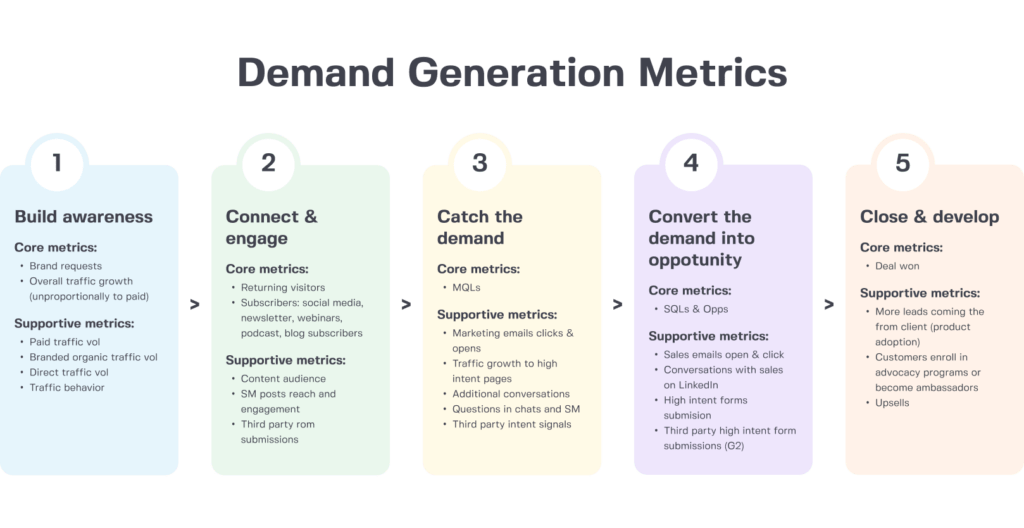

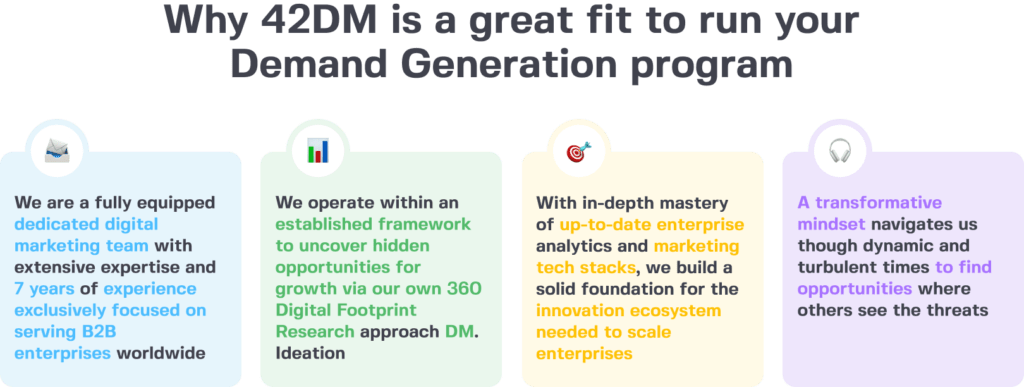
How to start Demand Generation?
As you have decided already to try demand generation for you company, here is a short check-list of things needed to start:
➀ Demand Generation leader in the company
➁ Clear identification of ICPs and their pains/gains/jobs
➂ Content & Media strategy tailored to ICP & aligned with customer journey
➃ Technologies for connectivity of channels and activities
➄ Complete marketing & sales flow for every stage of account lifecycle
B2B marketing agency 42DM is happy to become your trusted guide into the world of Demand Generation.
Next steps
It’s time to build a Demand Generation strategy for your B2B business. The best way to do so is by starting with research into ICPs and developing a Value Proposition Canvas for each of the ICPs and buyer personas.
It is crucial to identify business and product pains & gains that can be used to build a sustainable link between business challenges, product solutions, and your brand.
A successful demand generation strategy ensures all stakeholders understand the problem your brand solves, and more importantly, they recognize that this problem is crucial for their business.
Once you have crafted the message for each of the ICPs, it’s time to think about content, formats, & channels to deliver it in the most cost-efficient, up-to-date, and, most importantly, relevant manner to your potential customers.


